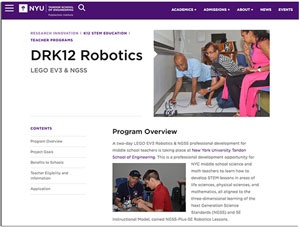
Temple University's College of Public Health is a diverse school experiencing significant growth online. Here's how the institution is supporting the development and maintenance of high-quality online faculty.

For students to succeed in online learning, faculty must be encouraged to go back to class themselves.

Instructional design firm iDesign has unveiled a new competency-based education program for learner experience professionals.

Technology innovation does not always come easily for time-crunched faculty members in higher ed. Here's how one institution provides a variety of training opportunities to help inspire faculty to try something new.

In a recent survey, 54 percent of faculty respondents said they believe adding more technology to their classroom would definitely increase student engagement.

This summer, New York University's Tandon School of Engineering is offering a free workshop for local middle school teachers on developing STEM lessons in the life sciences, physical sciences and mathematics.

Moving a course from brick-and-mortar to online requires rethinking how you deliver content, replicate in-class interactions and pinpoint areas for improvement.
Amazon Web Services is releasing three new badges focused on robotics, augmented reality and machine learning.
A new survey from learning platform edX has identified two major skill areas where respondents reported feeling a lack of proficiency in their jobs: data sciences, and business and soft skills.

How often do you hear comments like "We're just not there yet…" or "This is a technology that is just too slow to adoption…"? CT talks with veteran education technology leader Ellen Wagner, to ask for her perspectives on the adoption of impactful technologies — in particular the factors in our leadership and development communities that have the power to influence change.